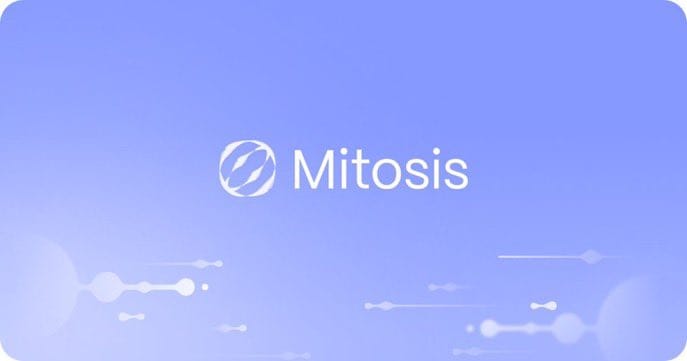Ecosystem-Owned Liquidity: The Community Power Behind Mitosis’s DeFi Vision
Introduction
Decentralized Finance (DeFi) has reshaped how we think about financial systems, offering open, intermediary-free access to services like lending, trading, and yield farming. Yet, a persistent challenge threatens its promise: liquidity fragmentation. Assets locked in isolated protocols or chains—like Ethereum’s Uniswap or Solana’s lending platforms—create inefficiencies, volatile yields, and barriers to scalability. Mitosis, a Layer 1 blockchain, tackles this through its innovative Ecosystem-Owned Liquidity (EOL) model, a community-driven framework that redefines how liquidity is managed and empowers users to shape DeFi’s future. This article explores the mechanics, impact, and transformative potential of EOL, highlighting why it’s the backbone of Mitosis’s vision for a unified, accessible DeFi ecosystem.
Understanding Ecosystem-Owned Liquidity
At its core, EOL is a system where liquidity providers (LPs) pool their assets into Mitosis Vaults, creating a collective resource managed through decentralized governance. Unlike traditional DeFi, where individual LPs deposit assets into isolated pools and hope for competitive yields, EOL ingregates liquidity under a Decentralized Autonomous Organization (DAO) structure. Users deposit assets (e.g., ETH, USDC) into Vaults, receiving Vanilla Assets (e.g., vETH) that represent their stake. These can be staked to mint miAssets (e.g., miETH), which grant governance rights and yield opportunities. Alternatively, users can lock Vanilla Assets in Matrix campaigns to earn maAssets, which offer fixed-term rewards. This setup ensures liquidity is not just pooled but actively managed by the community to maximize returns and support promising protocols.
The EOL model addresses three critical DeFi pain points:
Fragmentation: Liquidity trapped across chains limits capital efficiency. EOL enables seamless cross-chain deployment, so ETH on Ethereum can support Aave on Avalanche without manual bridging.
Unfair Access: Large investors often secure exclusive, high-yield deals. EOL’s collective bargaining power levels the playing field, giving retail LPs access to institutional-grade opportunities
Mercenary Capital: Protocols rely on short-term incentives, leading to unstable liquidity. EOL fosters long-term commitment through transparent governance and aligned incentives.
In this article, we would explore;
The Mechanics of EOL: Community at the Helm
The Community Power: Redefining DeFi Dynamics
Impact on the DeFi Ecosystem
Challenges and Future Potential
The Mechanics of EOL: Community at the Helm
At the heart of Mitosis’s Ecosystem-Owned Liquidity model lies a system that puts users in control of capital flow. Unlike legacy DeFi models where liquidity is static or protocol-bound, EOL enables users to interact dynamically with the ecosystem, turning their deposits into programmable, community-governed instruments.
Vaults, Vanilla Assets, and miAssets: The Core Building Blocks
In EOL, liquidity begins with Mitosis Vaults—smart contract-based pools where users deposit assets like ETH, USDC, or other supported tokens. In return, they receive Vanilla Assets (e.g., vETH), which are liquid, yield-bearing tokens representing their contribution to the vault.
To participate in governance or unlock further utility, users can stake these Vanilla Assets to mint miAssets (e.g., miETH). These assets grant voting rights in the Mitosis DAO and open up additional yield-generating opportunities.
Example: A user deposits 10 ETH into the vault, receives 10 vETH, and stakes it to mint 10 miETH. Now, they can vote on liquidity deployment strategies—like allocating funds to a new lending protocol on Optimism—and share in the resulting yield.
Matrix Campaigns and maAssets: Fixed-Term Liquidity With Rewards
For users who prefer fixed-term opportunities, EOL introduces Matrix campaigns. These are time-bound liquidity initiatives designed to support specific protocols or goals within the Mitosis ecosystem. Participants lock their Vanilla Assets for a defined period and receive maAssets, which come with fixed or performance-based incentives.
Example: A Matrix campaign may aim to bootstrap liquidity for a new DEX on Arbitrum. Users lock vUSDC for 90 days, receive maUSDC, and earn a guaranteed APY plus bonus tokens if the campaign reaches certain KPIs.
The Community Power: Redefining DeFi Dynamics
EOL isn't just a liquidity mechanism—it’s a governance revolution. By transferring decision-making to users and aligning incentives around shared goals, Mitosis empowers its community to actively shape the ecosystem’s direction.
DAO-Governed Liquidity Deployment
Every major liquidity movement within Mitosis is decided by DAO proposals. Whether it's allocating capital to a specific protocol, adjusting yield structures, or launching new Matrix campaigns, community members have a direct say.
Example: A proposal to allocate $5M of vETH to a high-performing stablecoin farm on Polygon is put to a vote. All miETH holders can participate, and once approved, the strategy is executed automatically by smart contracts—no intermediaries involved.
Incentive Alignment Through Governance Power
Beyond voting, governance power in Mitosis aligns user interests with ecosystem growth. Those who contribute liquidity, participate in campaigns, and engage in decision-making are rewarded—not just with yields but with a growing stake in the platform’s success.
Example: A user who consistently votes on profitable proposals and provides early liquidity to successful campaigns gains higher governance weight, unlocking tiered rewards or priority access to new Matrix campaigns.
Impact on the DeFi Ecosystem
The introduction of Ecosystem-Owned Liquidity (EOL) fundamentally shifts how liquidity behaves within decentralized finance. Rather than a passive, fragmented resource, liquidity under EOL becomes agile, responsive, and strategically deployed to maximize systemic value.
Breaking Down Cross-Chain Barriers
One of the most significant contributions of EOL is its native support for cross-chain liquidity movement. Through Mitosis’s interoperability layer, assets in Mitosis Vaults are no longer confined to a single chain. This unlocks a fluid capital layer where liquidity can move autonomously based on governance decisions, not centralized bridges.
Example: If yield opportunities diminish on Ethereum-based platforms but surge on Layer 2s like Base or zkSync, Mitosis Vaults can reallocate capital in near real-time—guided by DAO consensus—to optimize returns without the need for manual bridging or wrapping.
Amplifying Capital Efficiency
EOL’s pooled structure enhances capital efficiency. Instead of hundreds of users duplicating efforts across separate pools, liquidity is aggregated and strategically deployed for maximum yield and utility. This reduces slippage, deepens market depth, and supports more consistent APRs across integrated platforms.
Example: A single Mitosis Vault can simultaneously support lending on Aave, yield farming on Curve, and a new incentive program on a nascent DEX—allocating portions of its liquidity based on live DAO votes and market conditions.
Challenges and Future Potential
Despite its promise, Ecosystem-Owned Liquidity is not without hurdles. From adoption and education to scalability and security, the road ahead will require careful navigation and continuous innovation.
User Education and Complexity
EOL introduces a sophisticated new model that may initially intimidate casual DeFi users. Concepts like Vanilla Assets, miAssets, Matrix campaigns, and DAO-governed vaults require onboarding resources, transparent documentation, and user-friendly interfaces.
Solution: Mitosis has committed to building a comprehensive learning hub, step-by-step staking interfaces, and toolkits for new protocols to easily integrate EOL-compatible campaigns—all aimed at making advanced liquidity mechanics accessible to all.
Smart Contract Risk and Governance Capture
As with any DeFi system, smart contract vulnerabilities and governance manipulation pose threats. Centralizing too much power in large holders of miAssets could lead to biased liquidity decisions or attacks on campaign outcomes.
Mitigation Strategies: Mitosis is deploying multiple layers of audits, time-locked governance execution, and quadratic voting models to limit governance capture. Furthermore, incentive systems are being designed to reward long-term engagement and deter malicious behavior.
Conclusion
Ecosystem-Owned Liquidity is more than an innovation in capital management—it’s a vision for the future of decentralized finance. By placing power in the hands of users, aggregating fragmented liquidity, and aligning incentives through governance, Mitosis transforms DeFi into a truly community-driven, scalable, and efficient financial system.
As traditional DeFi struggles with volatility and siloed liquidity, models like EOL offer a blueprint for sustainable, inclusive growth. Whether you're a protocol seeking strategic liquidity or a user looking to influence DeFi’s direction while earning fair yields, Mitosis opens the door to a new era—where liquidity is not just deployed, but truly owned.


Comments ()